CONTENTS
- The Services Story
- Warming of the Indian Ocean
The Services Story
Context:
A comprehensive research report by the renowned investment banking firm Goldman Sachs, titled ‘India’s Emergence as the Global Services Hub,’ delves into India’s recent accomplishments in the global services sector and offers insights into its future growth and associated risks.
Relevance:
- GS2- Government Policies & Interventions
- GS3- Growth and Development
Mains Question:
As per a recent report by the renowned investment banking firm Goldman Sachs, India’s export growth rate ranks third globally since 2005, trailing only Singapore and Ireland. In this context, discuss the factors that have led to this feat and the challenges that India faces in the further expansion of exports. (15 Marks, 250 Words).
More on the Report:
- The report highlights India’s remarkable journey in the IT services domain since the pivotal economic reforms of 1991. The IT sector in India has emerged as a significant contributor to the nation’s GDP and overall welfare.
- In the fiscal year 2022, it accounted for 7.4% of India’s GDP, and projections suggest that by 2025, it will make up 10% of the GDP.
- The combined revenue of the IT and BPM industries is estimated to have reached $245 billion in the fiscal year 2023.
- The market size of India’s Information and Communication Technology (ICT) sector was valued at $273.50 billion in the current year and is forecasted to reach $421.59 billion within five years, demonstrating a compound annual growth rate (CAGR) of 9.04% during the forecast period.
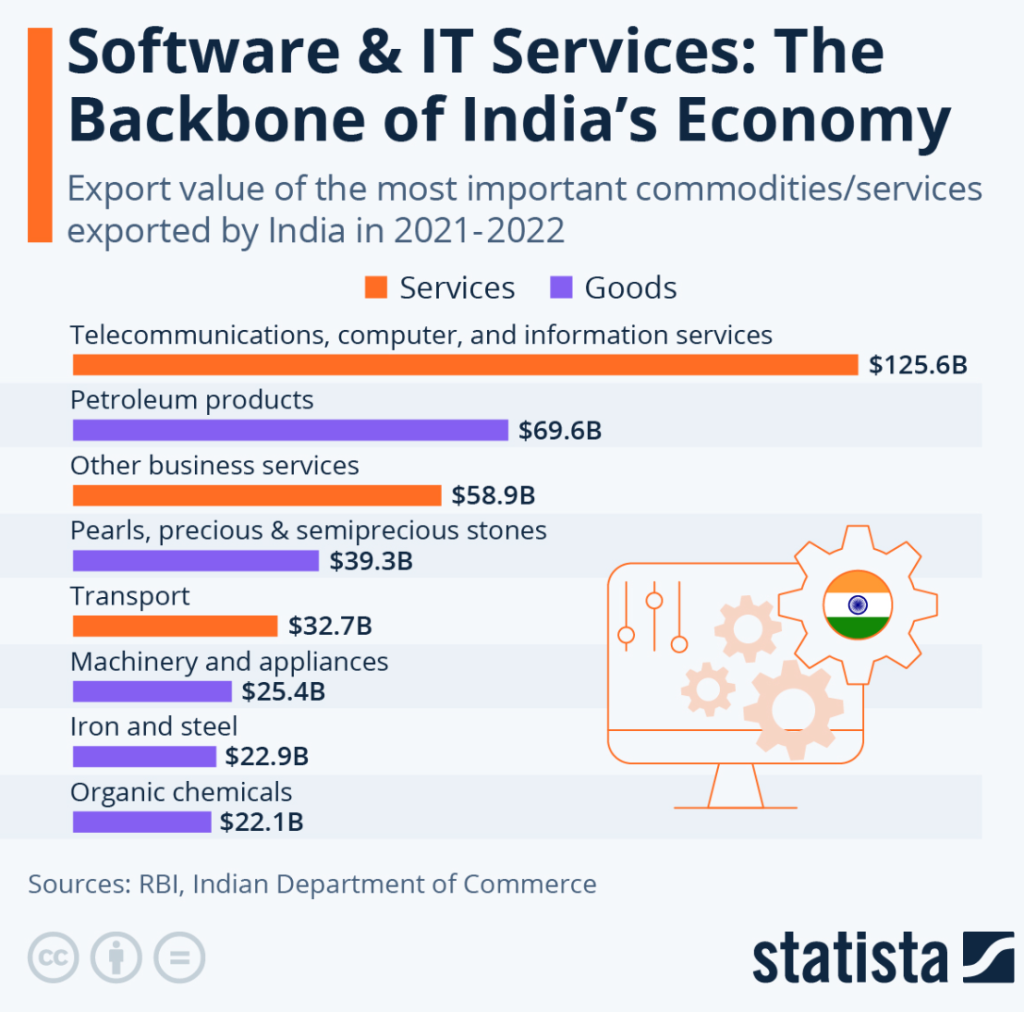
- However, the report adopts a broader perspective, encompassing various service exports over the past 18 years, including professional consulting, which has shown rapid growth, and travel services, which have been comparatively slower.
- The report also identifies financial services as a potential beneficiary of initiatives like the GIFT City project.
- Over the mentioned period, India’s intangible exports surged at a rate twice that of global services exports, amounting to nearly $340 billion last year.
- Impressively, India’s export growth rate ranks third globally since 2005, trailing only Singapore and Ireland.
- Furthermore, India’s share in global services exports has risen significantly from under 2% in 2005 to 4.6% in 2023, while its contribution to goods exports also experienced a notable increase from 1% to 1.8% during the same period.
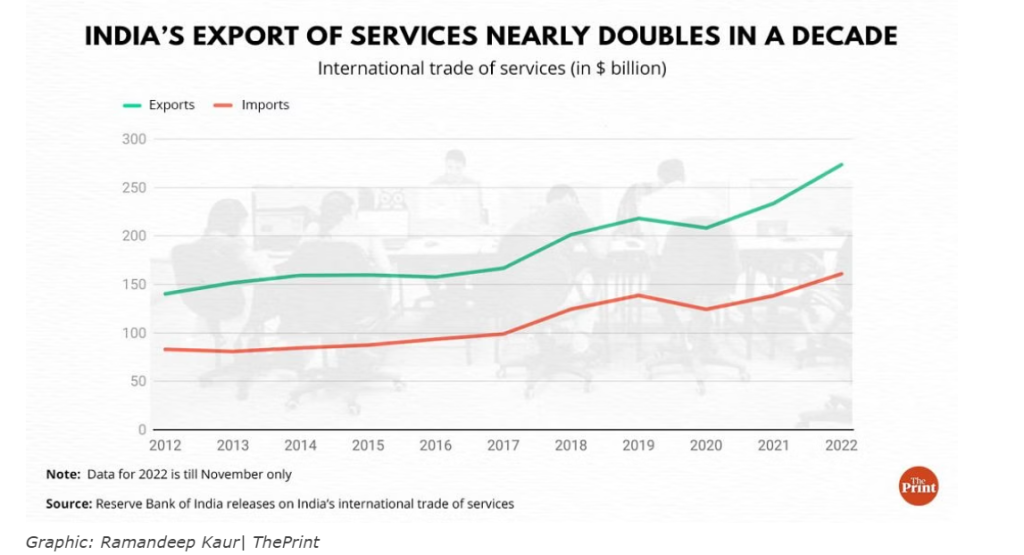
- The surge in services trade has provided crucial support to India’s external balances, shielding them from shocks like the soaring costs of oil imports.
Expectations Raised:
- Goldman Sachs anticipates this trend to persist, with services exports projected to reach $800 billion by 2030.
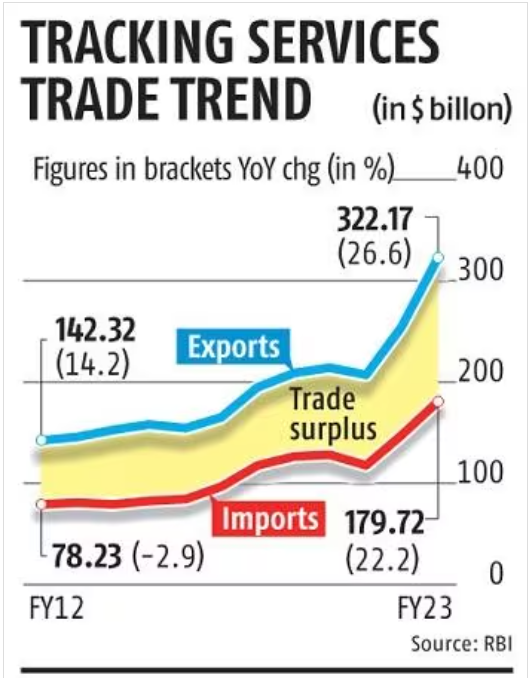
- While slightly below the government’s ambitious target of $1 trillion by 2030 for both services and merchandise exports, sustained growth in high-value services is expected to stimulate premium discretionary spending and drive demand in real estate, according to the firm’s analysis.
Concerns Associated:
- However, the immediate outlook remains uncertain, especially for leading IT services firms, still dominant in India’s export landscape, as they have downsized their workforce over the past year and issued cautious growth forecasts for the current year. For instance, Infosys expects only a modest revenue increase of 1% to 3% this year in constant currency terms.
- The emergence of global capability centers provides some reassurance, but analysts caution against complacency regarding India’s services growth.
- Key challenges include preparing graduates for the job market and addressing environmental pressures in growth hubs, such as the water crisis in Bengaluru.
- Furthermore, protectionist trends in destination markets and domestic policy interventions, like restrictive measures on IT hardware imports, pose additional risks to exports.
Conclusion:
To sustain India’s success in services, a balanced strategy is essential. This should entail vigorous efforts to secure global market access for all professional services and adopting a light-touch regulatory approach to foster innovation in areas like artificial intelligence, manufacturing-linked services, and blockchain applications.
Warming of the Indian Ocean
Context:
While India may currently be experiencing heatwaves, the potential prospect of a generous monsoon, as anticipated by the India Meteorological Department, might offer some psychological relief. However, looking ahead, there are significant concerns as per a recent study from the Indian Institute of Tropical Meteorology in Pune.
Relevance:
GS3- Climate Change
Mains Question:
Examine the rate at which the Indian Ocean has shown a higher degree of warming over the years. What are concerns associated with this warming and how can the littoral countries come together to counter the rising temperature? (15 Marks, 250 Words).
More on the Studies:
The Indian Institute of Tropical Meteorology in Pune, alongside other international institutions, has projected the probable effects on the Indian Ocean, based on anticipated global carbon emission patterns.
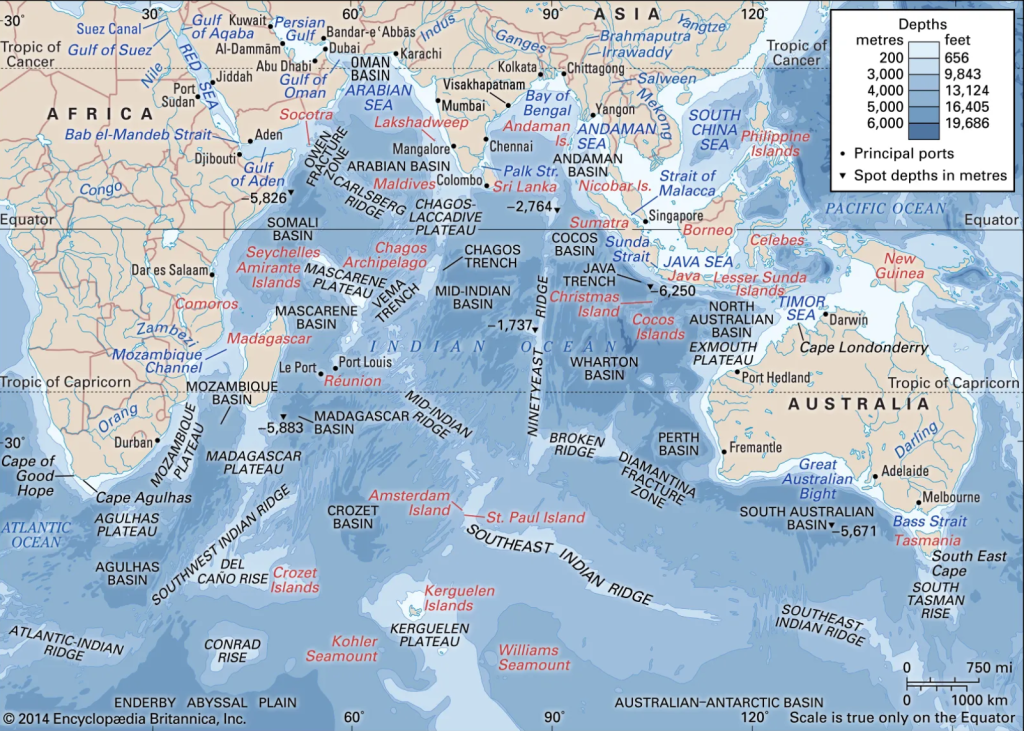
Marine Heatwaves:
- According to their findings, the Indian Ocean has already warmed by 1.2°C and is expected to further warm by 1.7°C to 3.8°C between 2020 and 2100.
- While heatwaves are a familiar occurrence, the study cautions against the emergence of ‘marine heatwaves,’ their oceanic counterparts, which are associated with the rapid formation of cyclones.
- Marine Heatwaves refer to extended periods characterized by unusually high Sea Surface Temperature (SST), which can have detrimental effects on marine ecosystems.
- These events are associated with coral bleaching, destruction of seagrass, and the loss of kelp forests, leading to negative impacts on the fisheries sector.
- Various factors contribute to the occurrence of marine heatwaves, with ocean currents playing a significant role in accumulating warm water in specific areas.
- Additionally, air-sea heat flux, involving the transfer of heat between the ocean surface and the atmosphere, can contribute to warming.
- Winds can either intensify or mitigate the effects of marine heatwaves, while climate phenomena such as El Niño can influence the likelihood of these events in specific regions.
- These events are predicted to increase dramatically, potentially escalating from the current average of 20 days per year to 220–250 days per year.
- Such a scenario could push the tropical Indian Ocean into a state of “near-permanent heatwave,” leading to accelerated coral bleaching and detrimental impacts on the fisheries sector.
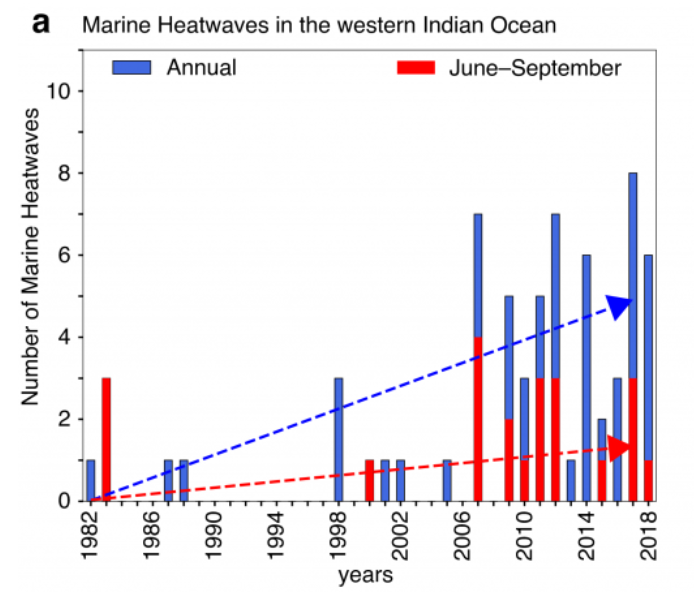
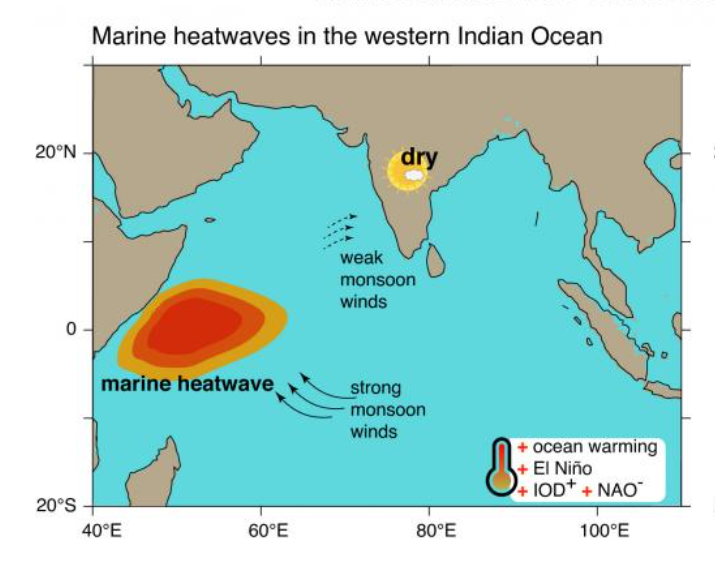
Heating in Depths:
- Furthermore, the ocean’s heating is not limited to the surface but extends throughout its depths.
- The study reveals that the ocean’s thermal capacity, measured from the surface to 2,000 meters below, is currently increasing at a rate of 4.5 zetta-joules per decade.
- This rate is projected to escalate to 16–22 zetta-joules per decade in the future. For perspective, a joule is a unit of energy, and 1 zetta joule equals a billion-trillion joules (10^21).
Impact of a Warming Indian Ocean:
- The effects of a warming Indian Ocean have profound implications for mainland India, manifested in the increased frequency of severe cyclones and a more erratic monsoon pattern.
- This shift is characterized by prolonged periods of drought followed by intense rainfall and subsequent flooding.
- These phenomena are closely linked to global warming, with human activities such as fossil fuel combustion significantly contributing to pushing the planet toward critical tipping points.
- Existing global commitments to mitigate greenhouse gas emissions are unlikely to substantially alleviate the ocean’s condition, as marine systems respond more gradually to external influences compared to terrestrial environments.
- Therefore, a pragmatic approach involves refining our understanding of the local impacts of the Indian Ocean.
Conclusion:
India should foster collaborative partnerships with neighboring countries bordering the Indian Ocean to enhance data collection and forecasting capabilities. Presently, these efforts pale in comparison to those in the Pacific region. Strengthening these collaborations will facilitate informed decision-making regarding infrastructure development and the protection of communities vulnerable to oceanic changes.




